
While Aboriginal people have long utilised the pelts of indigenous animals for rugs and cloaks, in the nineteenth and early-twentieth centuries, colonisers were attracted to these furs for their practical and aesthetic qualities, making them up into rugs that graced tents, huts and the interiors of grand houses. Possum skin was one of the most popular and numerous possum skin rugs have survived and are represented in collections around the country.
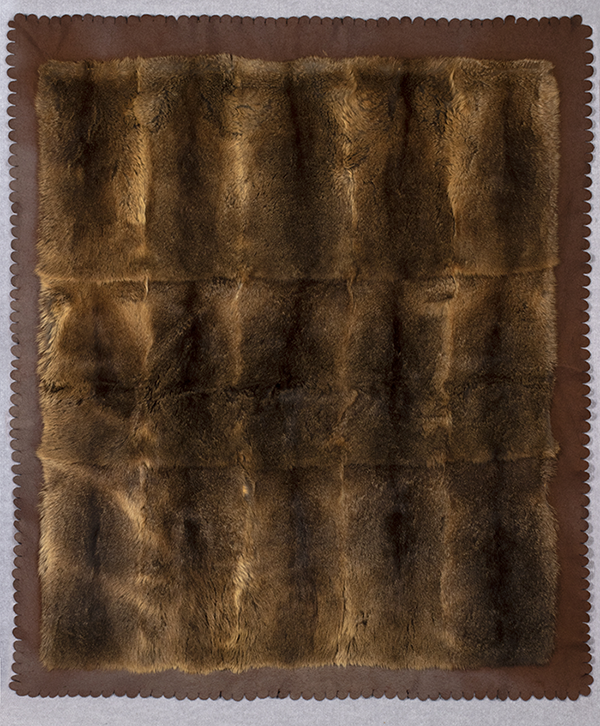 |
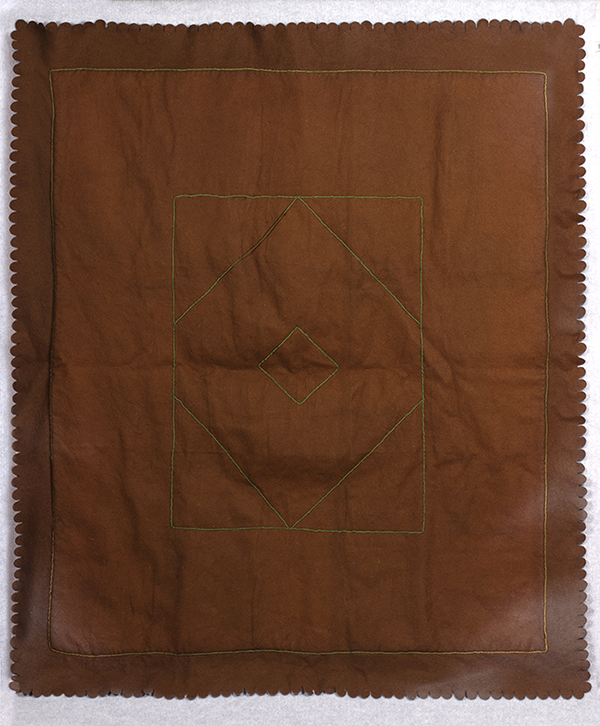 |
Australia, Possum skin rug, c.1920 |
The large possum skin rug in Brighton Historical Society's collection is made from fifteen rectangular-cut pelts mounted onto a brown wool felt with scalloped edges and an applied decorative cord pattern on the underside. The pelts have been machine-stitched together and each pelt measures 53.5 x 36 cm. Comparing the pelts with those in the collection of Museums Victoria, the relatively large size suggests that they came from the mountain brushtail species found in the wet forests of Victoria, eastern New South Wales and south-eastern Queensland.
The donor, who gave the rug to the Brighton Historical Society in 2005, stated that it was among a number placed on furniture during the winter months in a Brighton house in the 1920s. The rug may date to this time or earlier, since opossum (as they were known) skin rugs were useful and valued items in Australian homes during the nineteenth and early twentieth centuries. In 1852 Ellen Clacy, who published her experiences on the Victorian gold diggings, described how her party set off with "opossum rugs and blankets". The rugs were also prized gifts which were sent overseas. In 1883 the Australian politician Sir Henry Parkes sent a possum skin rug to the then British Prime Minister William Gladstone.
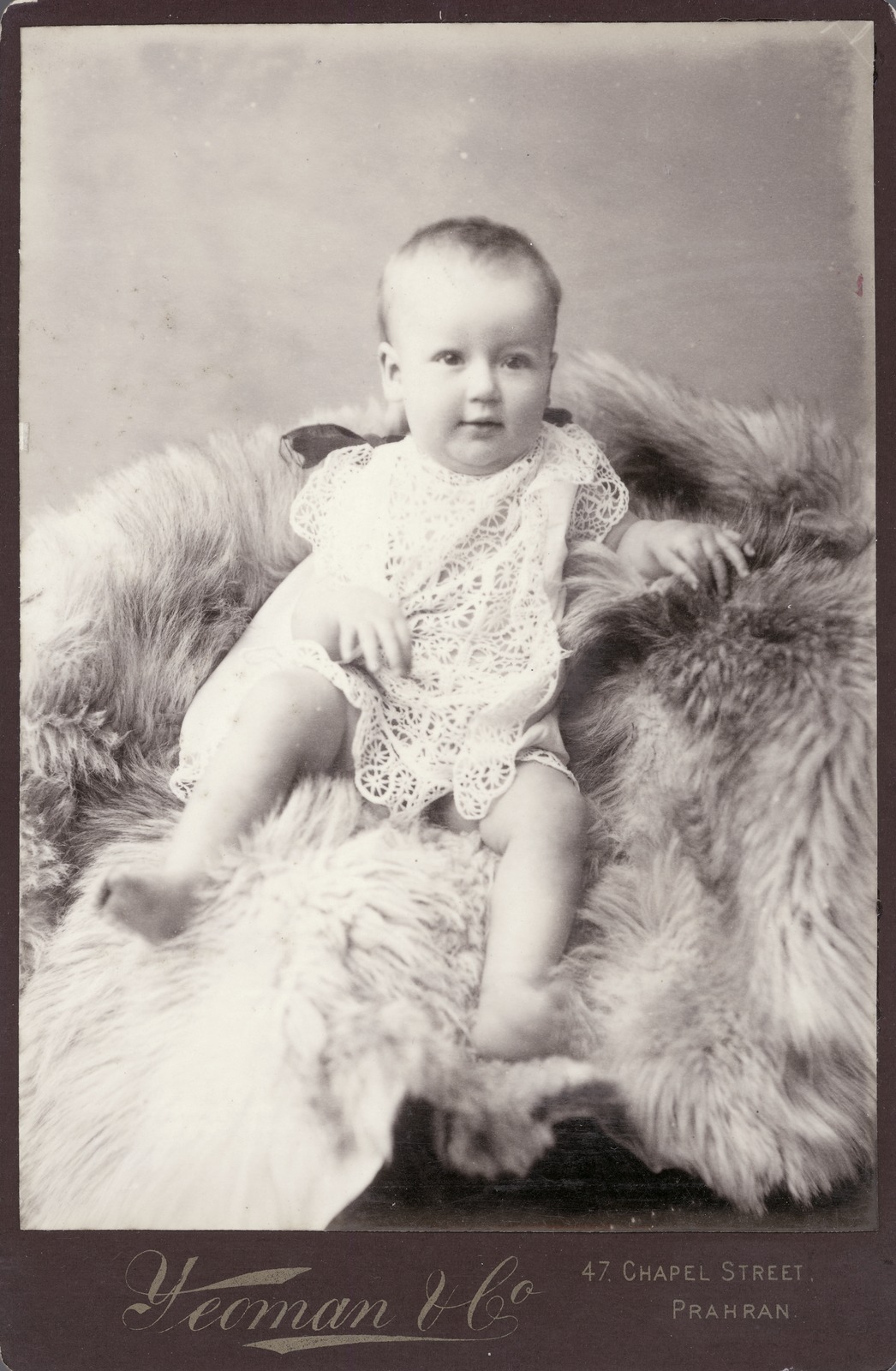 |
Yeoman & Co., Melbourne |
The popularity of the rugs can be seen in the fact that numerous late-nineteenth and early-twentieth century Australian photographic portraits depict subjects seated on chairs or sofas draped with possum skin rugs. In 1882 the Melbourne photographer James P. Lind photographed the drawing room of Fairlie House in Anderson Street, South Yarra, where numerous fur rugs, including what appear to be possum skin rugs, are shown scattered across the floor of a sumptuous Victorian interior.
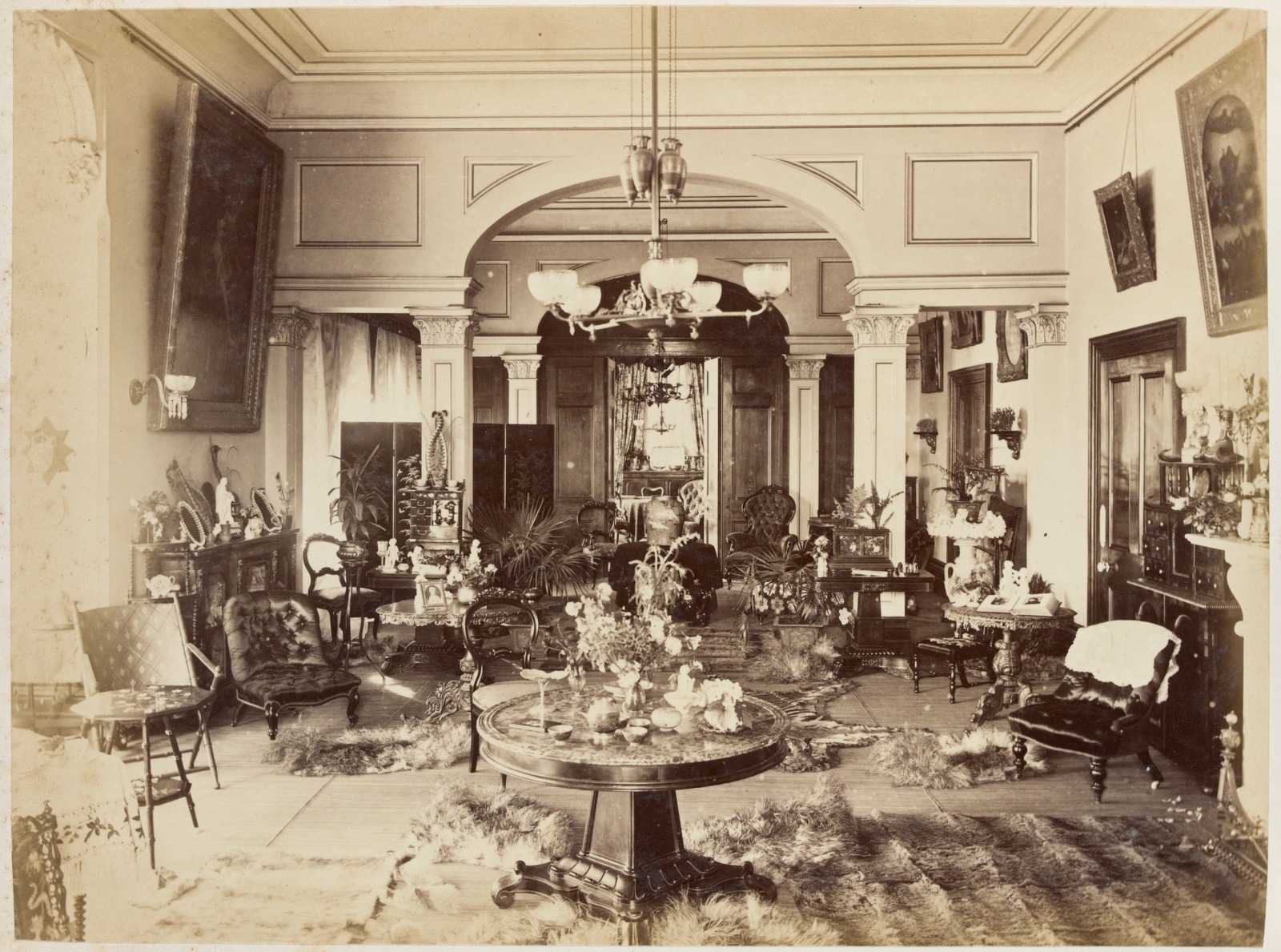 |
James P. Lind, Melbourne |
The Brighton Historical Society's rug was most likely made by a local furrier, with the skins either being procured through an inter-cultural trade with Aboriginal people, or from colonial hunters. In the nineteenth century there was a widespread and significant inter-cultural trade of possum skin rugs in Victoria which were made by local tribes for sale or barter with colonial settlers. These rugs were distinct from the traditional possum skin cloaks made and worn by the Aboriginal peoples of south-eastern Australia, which were incised with individual designs representing clan identity, animals, plants and maps of Country.
By the late nineteenth century millions of possums were being killed annually in a lucrative trade that included the pelts of numerous native animals, including koala and wallaby. The skins were sold locally and exported to Britain. Concerns for the survival of native animals lead to protection laws being introduced in the early twentieth century which limited the hunting of Australian mammals.
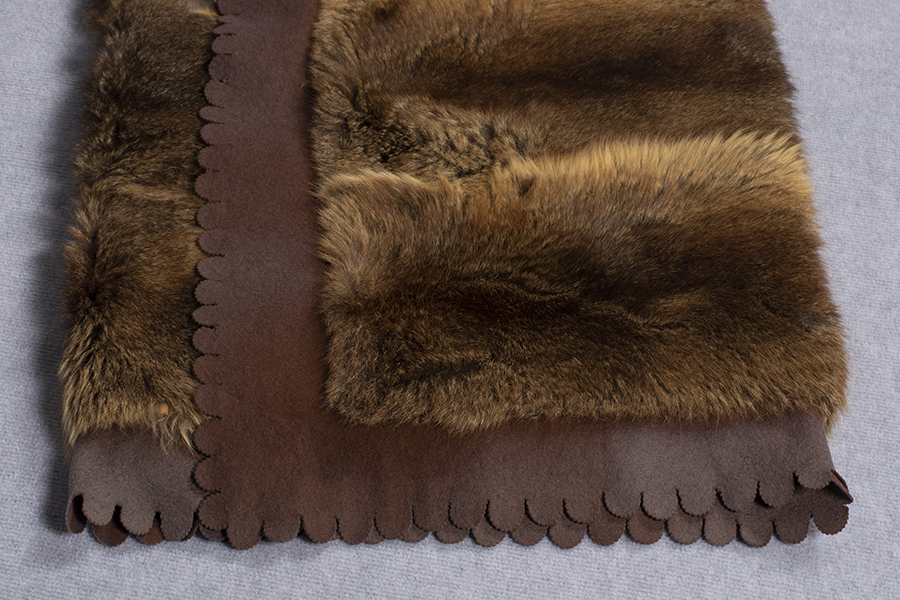 |
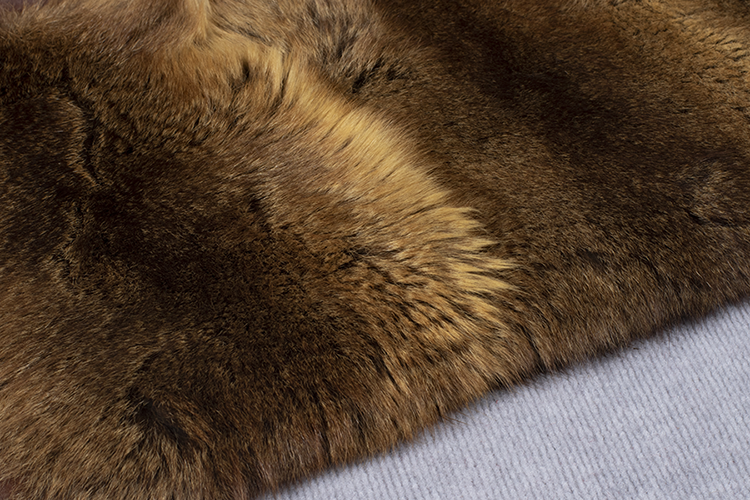 |
Australia, Possum skin rug, c.1920 |
In addition to the production of rugs made from the skins of native fauna, including wallaby, dingo and spotted-tail quoll, the furs were also sought for fashionable outerwear. The National Gallery of Victoria has a cape made from platypus fur dating to the 1890s in its collection and Brighton Historical Society has a coat made in the 1960s from the pelts of the rakali (also known as the Australian water-rat).
Today the hunting of possums is prohibited in Australia. The surviving possum skin rugs located in collections around the country are rare examples of a popular and exotic locally-made product that was found in Australian homes in the nineteenth and early twentieth centuries.
Laura Jocic, 2019
Page design by Jessica Curtain
References
Chair, Fred, "Dallong – Possum skin rugs", Provenance: The Journal of Public Record Office Victoria, issue no. 4, 2005. https://prov.vic.gov.au/explore-collection/provenance-journal/provenance-2005/dallong-possum-skin-rugs
Hrdina, Frances & Greg Gordon, "The koala and possum trade in Queensland, 1906-1936", Australian Zoologist, vol. 32, 4, December 2004, 543-585.
Gladstone to Sir Henry Parkes, 15 October 1883. Papers of William Ewart Gladstone/Letter Books (Item f.173v) MSS 44527 – 44551. National Library of Australia.
Rolfe, Margaret, Patchwork Quilts in Australia, Greenhouse Publications, Melbourne, 1987.
Thompson, Patricia (ed.), A lady's visit to the gold diggings of Australia in 1852-1853 written on the spot by Mrs. Charles Clacy, Angus & Robertson, London, 1963 (first published 1853).
Acknowledgements
Thanks to the staff of the Vertebrates collection, Museum Victoria, for answering my enquiries and providing access to the collection.
This research was funded by a Local History Grant from Public Record Office Victoria.
Brighton Historical Society Costume Collection Project, 2018-2019.
